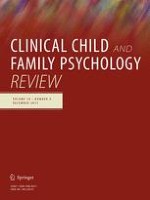20-10-2015
Children’s Mental Health and Well-Being After Parental Intimate Partner Homicide: A Systematic Review
Gepubliceerd in: Clinical Child and Family Psychology Review | Uitgave 4/2015
Log in om toegang te krijgenAbstract
When one parent kills the other, children are confronted with multiple losses, involving their attachment figures and their direct living environment. In these complex situations, potentially drastic decisions are made, for example, regarding new living arrangements and contact with the perpetrating parent. We aimed to synthesize the empirical literature on children’s mental health and well-being after parental intimate partner homicide. A systematic search identified 17 relevant peer-reviewed articles (13 independent samples). We recorded the theoretical background, methodology, and sample characteristics of the studies, and extracted all child outcomes as well as potential risk and protective factors. Children’s outcomes varied widely and included psychological, social, physical, and academic consequences (e.g., post-traumatic stress, attachment difficulties, weight and appetite changes, and drops in school grades). Potential risk and protective factors for children’s outcomes included 10 categories of pre-, peri-, and post-homicide characteristics such as cultural background of the family, whether the child witnessed the homicide, and the level of
conflict between the families of the victim and the perpetrator. We integrated the findings into a conceptual model of risk factors to direct clinical reflection and further research.
